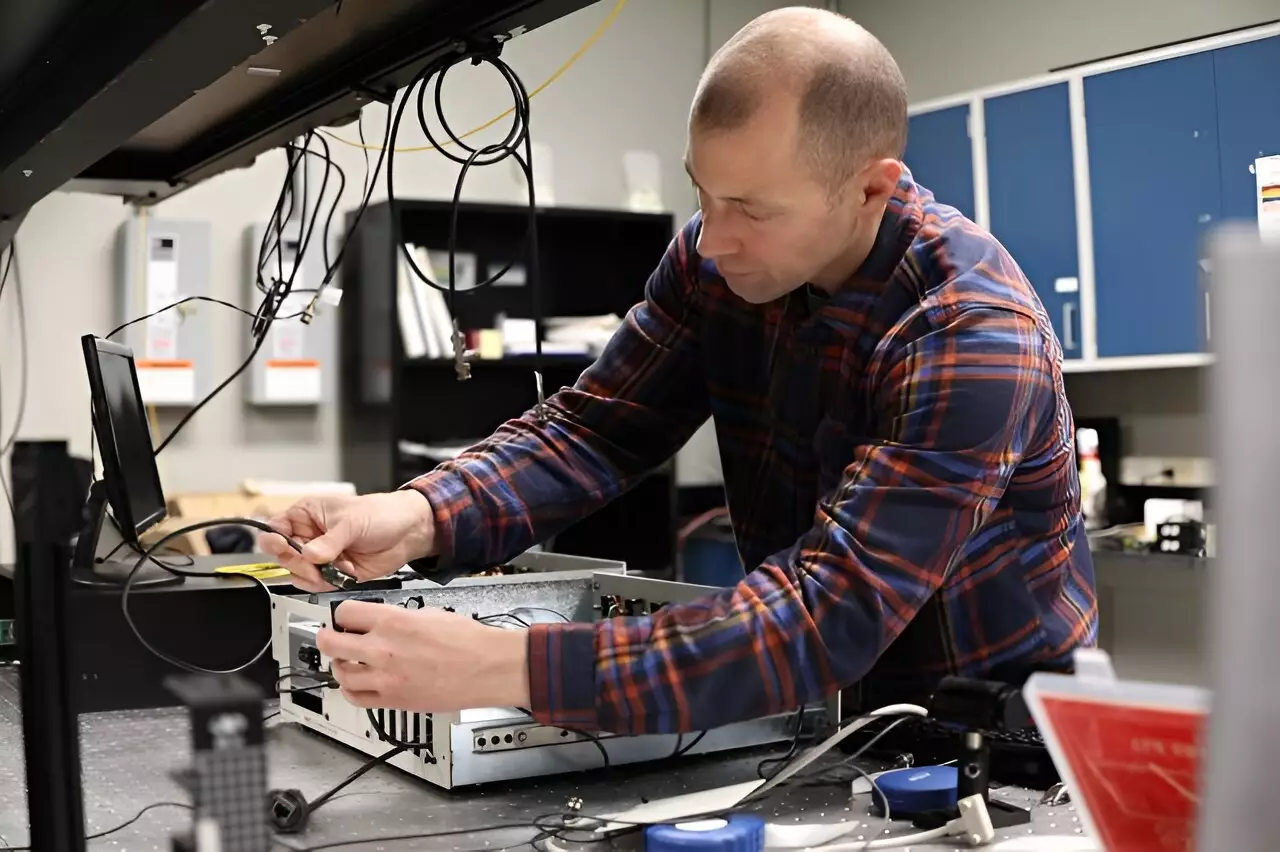In a groundbreaking development, researchers at the Department of Energy’s Oak Ridge National Laboratory have successfully demonstrated the feasibility of implementing advanced quantum-based cybersecurity in a deployed fiber link. This achievement, which was recently published in CLEO 2023, builds upon an earlier proof-of-principle laboratory experiment conducted by ORNL scientists in 2015. By transmitting a quantum signal for quantum key distribution utilizing a true local oscillator, the team was able to showcase the secure sharing of a secret key in a fiber-optic network setting.
Quantum key distribution is a cryptographic protocol that allows two parties to generate a secure key that only they have knowledge of. This is achieved by utilizing lasers to produce weak optical pulses between two designated points, typically referred to as Alice and Bob. When the receiving party measures a pulse, any deviations can indicate potential interception or tampering by an eavesdropper. In earlier experiments that lacked a true local oscillator, the optical pulse was accompanied by the local oscillator, creating vulnerabilities that were not accounted for in existing security practices.
The recent experiment conducted by the ORNL team addressed these vulnerabilities by employing optical signals generated by independent lasers at both the transmitting and receiving ends. This approach leverages the wavelike nature of photons and interference-based measurements to ensure secure communication. By focusing on interference patterns that align with the laser signal, the researchers were able to enhance the signal-to-noise ratio, thereby minimizing potential data breaches and ensuring the confidentiality of the distributed key.
One of the key advantages of the ORNL team’s approach is its compatibility with existing fiber-optic infrastructure, making it a cost-effective and easily adoptable solution. By encoding the quantum signal in continuous variables that describe the properties of photons in amplitude and phase, the researchers were able to expand the distribution of randomness for enhanced cybersecurity measures. This not only breaks new ground in information security but also streamlines the integration of quantum key distribution into conventional communication systems.
Moving forward, the research team will focus on replicating the success of their experiment across a broader range of network scenarios. By continuing to refine the utilization of quantum-based cybersecurity measures, they aim to establish a robust framework that can be implemented on a larger scale. The integration of quantum key distribution in deployed fiber links demonstrates the potential for enhanced security and privacy in communication networks, paving the way for a more secure digital future.


Leave a Reply